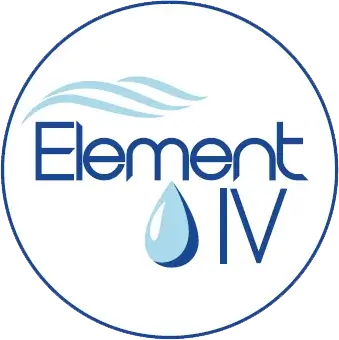Understanding Nausea: IV Therapy for Fast Relief

When your stomach is churning and you feel like you might have to rush to the bathroom any minute, you’re experiencing that dreaded feeling: nausea. It’s something that can put a screeching halt to your day and make you miss out on life. But what if there was a way to find relief without ever leaving home?
Sometimes the typical go-to, oral medications, might not do the trick. They’re either tough to swallow when you’re already feeling sick or just don’t seem to work. That’s where alternative methods, like the direct approach of IV therapy, IV hydration and IV treatment of nausea, can come into play. But for those of us who aren’t familiar with in- home IV treatments, mobile IV therapy, or companies like Element IV Therapy, We can help explain and help you understand why IV medication and IV therapy for nausea can offer you hope.
Decoding Nausea: More Than A Queasy Feeling
First off, nausea isn’t the same for everyone—it can range from light queasiness to a relentless upset that seemingly doesn’t end. It’s not always about something you ate; it could be ear problems, a side effect of medication, hormonal shifts, or a host of other causes.
Here’s what we’re diving into:
- Why does our body trigger nausea? Is it trying to tell us something?
- What are the usual suspects causing that ill-feeling?
- Home remedies and over-the-counter solutions
- How to discuss nausea with your doctor
Despite many causes and treatments, easing nausea can be a tricky puzzle. After all, our bodies are programmed to feel nauseated for a reason sometimes — it’s our built-in alarm system to warn us about possible toxins or medical issues.
By knowing what could trigger nausea, we can nip it in the bud with the right approach. But those tricky symptoms can also react to things that are far from toxic:
- Chemical Triggers: Sometimes, our bloodstream or even our spinal fluid can contain elements that ring the nausea alarm.
- Nerve Signals: Our vagus nerve gets the signal from different parts of our body, including the gut, which can start the queasy feelings.
- Hormonal Changes: Hormones often play a huge role in how our stomach handles food, sometimes leading to discomfort.
Identifying Your Nausea: More than Just a Queasy Feeling
Not all nausea is created equal. We typically think of nausea as a general feeling of sickness, but healthcare professionals categorize it to better understand its origins. Turns out, there are different shades of nausea. From the typical upset stomach to nausea caused by balance issues (yes, your ears can play a role here), it’s important to pinpoint what’s causing your discomfort so you can tackle it head-on. Here are some common reasons:
- Gastrointestinal Nausea: This is the classic kind, originating in the stomach, often leading to vomiting.
- Vestibular Nausea: Arising from the inner ear, often coinciding with dizziness or other balance issues.
- Chemotherapy-Induced Nausea: A complex type that’s a mixture of various factors such as the release of specific hormones, gut contraction, and inflammation.
- Pregnancy Nausea: Often hormone-driven, particularly during the first trimester of pregnancy.
Understanding the type of nausea you’re experiencing can help in finding the most effective treatment. That may include IV therapy or calling a mobile IV Therapy company for IV treatment of nausea.
When to Contact a Medical Professional
- Call 911 or the local emergency number or go to an emergency room if you:
- Think the vomiting is from poisoning
- Notice blood or dark, coffee-colored material in the vomit
- Call a provider right away or seek medical care if you or another person has:
- Been vomiting for longer than 24 hours
- Been unable to keep any fluids down for 12 hours or more
- Headache or stiff neck
- Not urinated for 8 or more hours
- Severe stomach or belly pain
- Vomited 3 or more times in 1 day
Signs of dehydration include:
- Crying without tears
- Dry mouth
- Increased thirst
- Eyes that appear sunken
- Skin changes: For example, if you touch or squeeze the skin, it doesn’t bounce back the way it usually does
- Urinating less often or having dark yellow urine
Navigating Nausea without Medication
For many patients, particularly those who prefer to avoid medications, or who have concerns about potential side effects, non-pharmacological interventions can be highly effective in reducing nausea. Consider these side-effect-free strategies:
- Ginger: This root has been trusted for ages to fight off nausea. Whether it’s in tea form, as a chew, or swallowed in a capsule, many swear by it. Long valued for its anti-nausea properties, ginger in various forms can offer relief. Some prefer a natural ginger root tea, while others find ginger chews or capsules more convenient.
- Acupressure: Special bands or bracelets can apply pressure to specific points on the body, which some find alleviates nausea. There are bands and bracelets that promise nausea relief by putting pressure on just the right spot on your wrist.
- Deep Breathing and Relaxation: Stress doesn’t just affect your mind; it can upset your stomach, too. Techniques that encourage deep breathing and relaxation, like meditation, can work wonders. Stress and anxiety can exacerbate nausea. Learning to breathe deeply and practicing relaxation techniques like meditation can make a substantial difference.
Implementing these techniques can empower patients to manage their nausea without relying solely on medication.
Over-the-Counter Nausea Relief Options
If non-pharmacological strategies aren’t providing the needed relief, it may be time to consider over-the-counter (OTC) treatments. Here are a few commonly used options:
- Antihistamines: Medications like diphenhydramine (Benadryl) or meclizine (Antivert) (Dramamine) Dimenhydrinate can be effective for certain types of nausea, especially vestibular nausea (Inner ear). This medication prevents and treats motion sickness symptoms like nausea, vomiting and dizziness. It works by helping your body maintain its sense of balance.
- Bismuth Subsalicylate: Known by the brand name Pepto-Bismol, this medication can soothe an upset stomach and reduce symptoms of nausea.
Before purchasing any OTC medication, it’s recommended to consult your healthcare provider, especially if you’re already taking other medications, to avoid any potential interactions.
Prescription Options for Severe or Persistent Nausea
For individuals with more severe or persistent nausea, or those who have not found relief with OTC options, prescription medications might be necessary. Here are a few commonly prescribed drugs for nausea:
- Ondansetron (Zofran): This medication is frequently used to prevent nausea and vomiting associated with chemotherapy, radiation therapy, and surgery, among other causes.
- Promethazine (Phenergan): A versatile drug that addresses various forms of nausea and vomiting.
- Benadryl (diphenhydramine): Discussing the benefits and potential risks of prescription medications with your healthcare provider is essential to make an informed decision about your treatment.
- There are more: It’s best to discuss with your Provider
The IV Hydration Advantage: Direct Relief, Rapid Response
The intravenous administration of medication may sound complex, even daunting, but it offers a straightforward benefit: it bypasses the digestive system, ensuring the full dose reaches the circulatory system and the intended target organs.
In the context of nausea, this can mean the difference between a lengthy recovery and immediate relief. Consider a chemotherapy patient, plagued by constant waves of sickness. IV antiemetics (nausea medications) can swiftly neutralize these feelings, restoring a sliver of normalcy in a tumultuous time.
The rapid onset of action is another feather in IV therapy’s cap. Traditional oral medications may take hours to alleviate symptoms, a timeframe that can feel interminable for someone in distress. IV administration, on the other hand, offers relief that can begin within minutes of the treatment’s initiation.
Beyond Nausea: The Versatility of IV Therapy and IV Treatment for Nausea
Nausea may be the front-and-center star in our discussion, but the stage upon which IV therapy performs is vast. From dehydration and chronic pain to serious infections or nutritional deficits, the benefits of IV medication are many.
For some conditions, such as dehydration, IV therapy is not just ideal—it’s the gold standard. When patients can’t keep down fluids, intravenous rehydration can be life-saving. In the case of migraines, a cocktail of IV medications can prove to be a more potent off-switch than its oral counterparts.
In chronic illnesses, frequent nausea can erode the patient’s quality of life. Regular IV treatments can offer a stable, more solid platform from which to manage the symptoms and continue with daily life. It’s a lifeline for many, promising sustainability and, crucially, predictability.
IV Treatment for Nausea and IV Hydration: The Dynamic Duo
Despite its clear benefits, IV therapy can be the subject of skepticism and misinformation. Some may associate it solely with emergency situations, overlooking its role in chronic care management. Accessibility may also be an issue, with some patients presuming that it’s only available in hospitals. There are in-home IV Therapy options, often call mobile IV therapy.
Understanding IV therapy as a safe, controlled environment for treatment is paramount. The right knowledge can debunk the fear that surrounds IV treatment. The reality is that for many, it’s a comfortable and often calming experience, conducted in specialized clinics or even the home environment, under the watchful eye of healthcare professionals.
For those seeking nausea relief, it’s important to understand their options and a have a toolkit for a more comfortable experience. Maintaining hydration is critical, and the IV route offers unique opportunities for nausea relief. Intravenous medications can be administered with rapid onset, allowing for quicker relief without the need for the patient to take them orally. When administered as part of IV therapy, anti-nausea medications may offer especially potent and consistent relief.
Talking to Your Doctor or Healthcare Provider About Nausea and IV Treatment for Nausea
It’s always good to chat with a healthcare professional about your nausea, especially if it’s persistent or severe. They can provide insights into what’s happening and help you find the best path forward, tailored just for you. Your provider should work with you to develop a plan that addresses your individual needs and concerns, ensuring you have the best possible treatment options and experience with IV therapy for nausea, IV treatment for nausea, IV hydration for nausea or other treatment option.
Taking Control of Your Nausea Experience with IV Treatment for Nausea
Nausea doesn’t have to be an inevitable part of your life. By understanding the causes and types of nausea, exploring a range of relief options from non-pharmacological techniques to prescription medications, to IV therapy, IV treatment for nausea and maintaining open communication with healthcare providers, patients can take control of their nausea experience and keep as comfortable as possible.
Empowerment comes from knowledge, so use this information to navigate the seas of nausea relief, finding what works best for you. Remember, you are not alone in this journey, and a world of comfort and ease awaits on the other side of effective nausea management.
Mobile IV Therapy can help you get back on your feet in no time. By getting IV Hydration or an IV treatment for Nausea along with an IV drip of vitamins and minerals, you can combat symptoms of nausea, dehydration, and general malaise. If you’re feeling nauseated, run down and think you could benefit from a Mobile IV Therapy, call us today to schedule an appointment 602-672-0257
Take care of yourself.
References
Crane BT, Kaylie DM. Central vestibular disorders. In: Flint PW, Francis HW, Haughey BH, et al, eds. Cummings Otolaryngology: Head and Neck Surgery. 7th ed. Philadelphia, PA: Elsevier; 2021:chap 168.
Guttman J. Nausea and vomiting. In: Walls RM, ed. Rosen’s Emergency Medicine: Concepts and Clinical Practice. 10th ed. Philadelphia, PA: Elsevier; 2023:chap 25.
McQuaid KR. Approach to the patient with gastrointestinal disease. In: Goldman L, Cooney KA, eds. Goldman-Cecil Medicine. 27th ed. Philadelphia, PA: Elsevier; 2024:chap 118.








